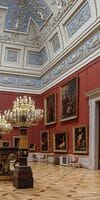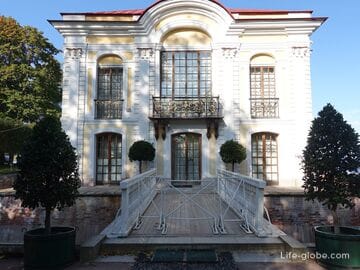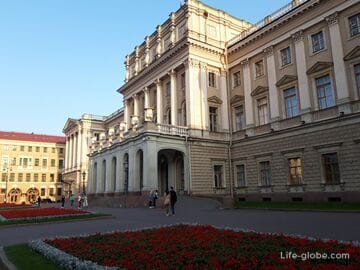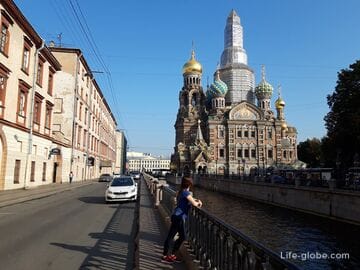The State Hermitage Museum is a museum of fine and decorative arts located in the city of Saint Petersburg.
Full official name: Federal State Budgetary Cultural Institution "State Hermitage".
The formation of the Hermitage's collections originates from private collections of works of art that were acquired by the Russian Empress Catherine II.
Initially, the collections were housed in a separate palace building, which was erected starting in 1764 by the decree of Catherine II next to the Winter Palace, and was used for personal needs and a narrow circle of the empress.
This building was called "Hermitage" - from the French "ermitage" - a place of solitude, a cell, a hermit's shelter. It is from this building that the name of the entire museum "Hermitage" was fixed. Now the building is a Small Hermitage.
Since 1771, by order of Catherine II, another building was built to house the palace collections and the library. Now it is a Large (old) Hermitage.
By 1842, the collection had grown so large that it had little space in the existing buildings, and, by decree of Nicholas I, a new separate building was erected - now the New Hermitage-the first building in Russia created specifically to house the museum's art collections and accessible to the public.
In the future, the museum's collections were supplemented with new exhibits.
Today, the State Hermitage Museum is one of the largest and most visited museums in the world. Every year, the museum receives about 5 million visitors.
The Hermitage holds more than three million exhibits from the Stone Age to the present century, including works of art and monuments of world culture: 1,014,806-works of fine and applied art; 1,125,975-numismatic monuments; 808,695-archaeological monuments; 14,016 - weapons; 214,771 (or more) - other exhibits.

Complex and collections of the State Hermitage Museum
The modern State Hermitage Museum is a museum complex consisting of several buildings, mostly former palaces and architectural dominants of St. Petersburg.
The Hermitage museum complex includes:
- The main museum complex, located in the historical center of St. Petersburg and consisting of six buildings;
- General Staff Wing;
- Menshikov Palace;
- museum in the Exchange building;
- restoration and conservation center " Staraya Derevnya»;
- museum of the Imperial Porcelain Factory.
The Hermitage also has an official 5-star hotel with an exquisite interior of the luxury of Tsarist Russia, which is located in a quiet part of the historical center of St. Petersburg in a historic building of the 19th century.
The main museum complex of the State Hermitage Museum
The main museum complex of the State Hermitage Museum consists of several buildings that form the core of the museum, are connected by covered archways and are located in the very center of St. Petersburg-between Palace Square, Millionnaya Street and Palace Embankment.
The Main Museum Complex houses the main expositions of the State Hermitage Museum - collections of cultural and art monuments of the ancient world, Western Europe, Russia, and the countries of the East, as well as archaeological and numismatic collections.
The four buildings form a single museum:
- The Winter Palace is a former imperial residence and a striking monument of the Baroque style, with its main facade facing the Palace Square.
The expositions of the State Hermitage Museum, located in the Winter Palace, represent recreated state halls and apartments of the royal family, contain collections of antiquities of Eurasia and the East, as well as a collection of paintings, sculptures and decorative arts of Europe and the East. Learn more about the Winter Palace…
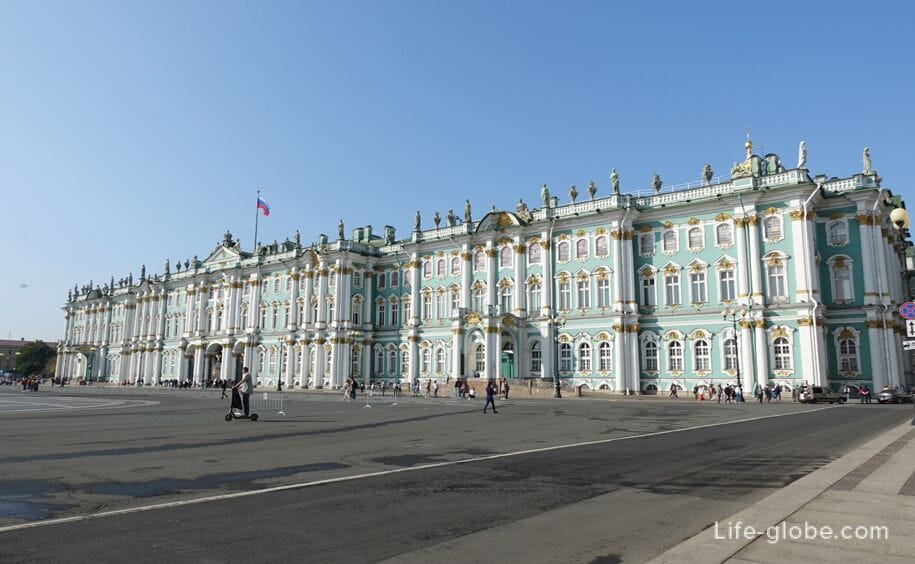
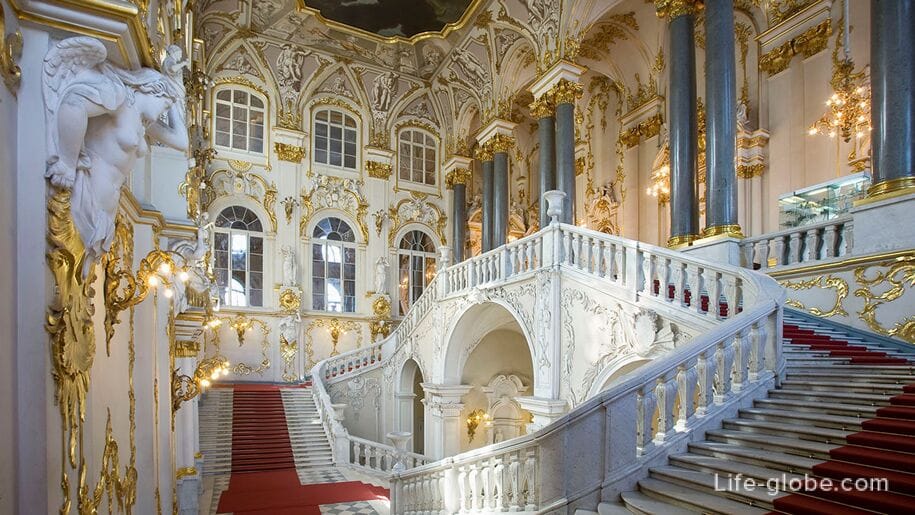
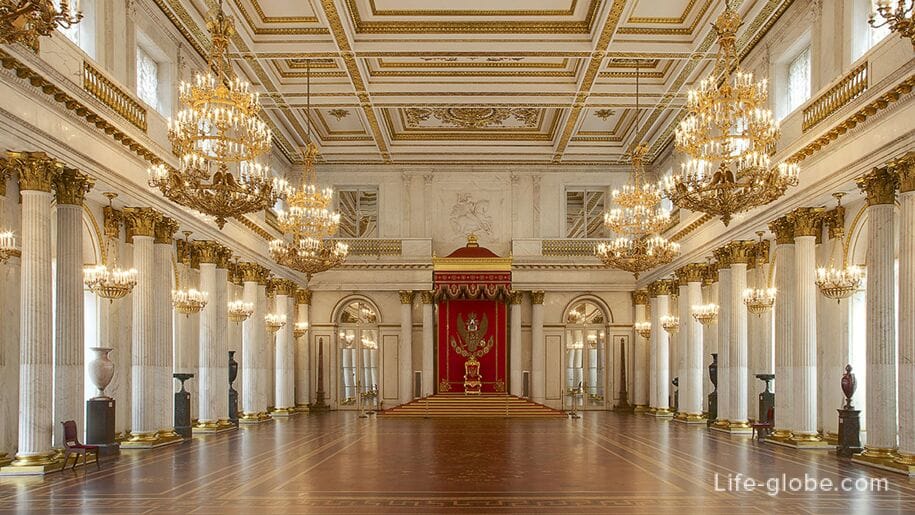
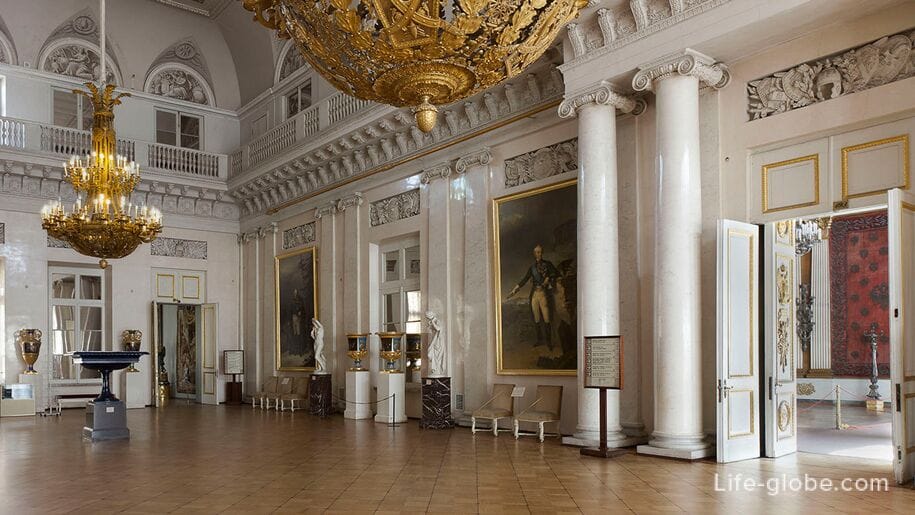
- The Small Hermitage is an architectural monument that was built in 1764-1769 by the decree of the Empress Catherine II, and from which the history of the Hermitage began.
At the level of the second floor of the building there is an enclosed courtyard - former Hanging Gardens, which today contain flower beds, a fountain and several sculptures.
In the halls of the small Hermitage there are expositions of painting and applied art of Western Europe. And in the Pavilion Hall, created in the 1850s by A. I. Stackenschneider, the famous Peacock clock, made by an English mechanic in London in the 1770s, is stored. Read more about the Small Hermitage…
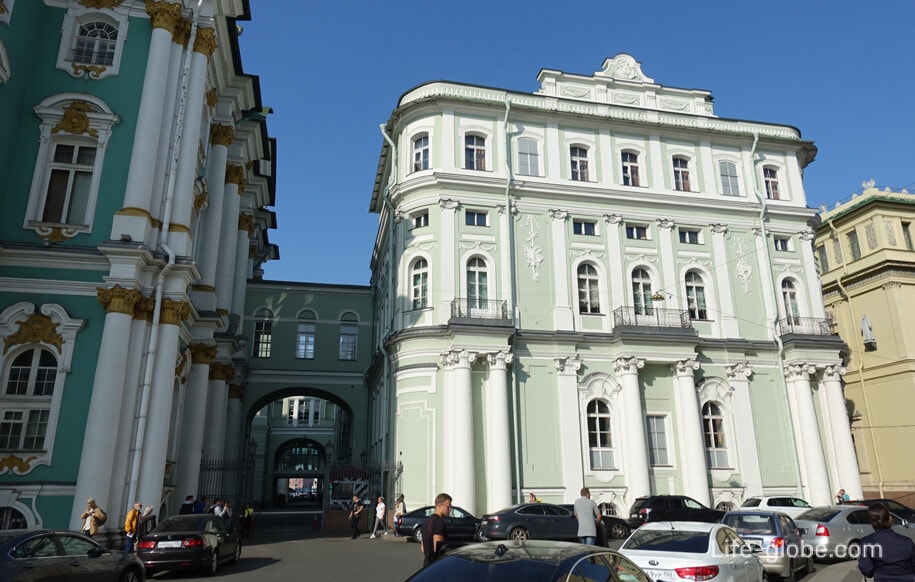
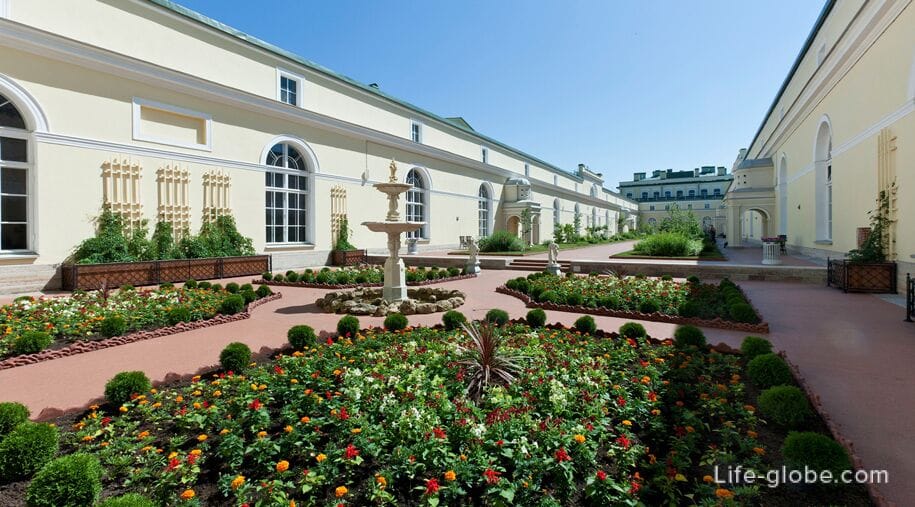
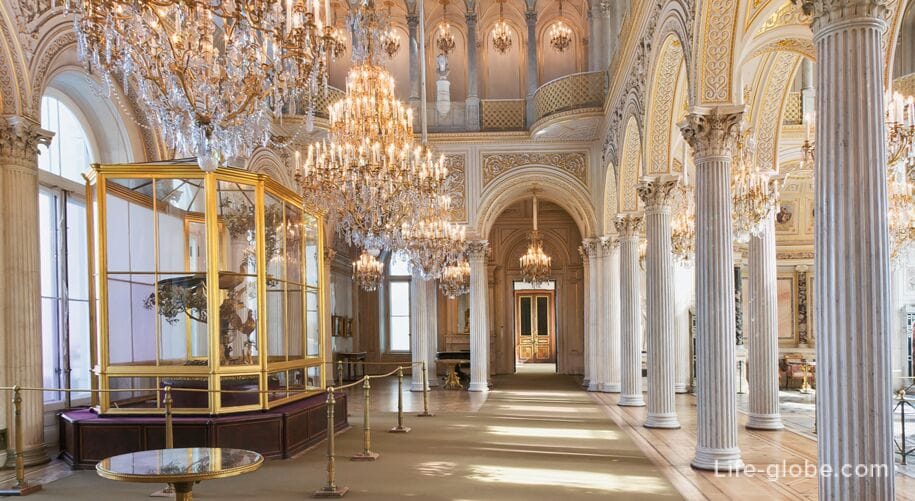
- The New Hermitage is the first building in Russia created specifically to house the museum's art collections.
The building was built in 1842-1851 by the decree of Emperor Nicholas I in the style of historicism with austerity and monumentality of appearance.
In the architecture of the building, the porch (portico) in front of the main entrance (Millionnaya Street) is particularly attractive. The portico is decorated with 10 figures of Atlanteans of huge sizes, which were carved from gray Serdobol granite and installed on pedestals of rapakivi granite.
In the halls of the museum building, which have preserved their historical appearance, there are collections of ancient art, painting, sculpture and decorative and applied art of Europe.
Address of the New Hermitage: 35 Millionnaya Street. Learn more about the portico and the New Hermitage…

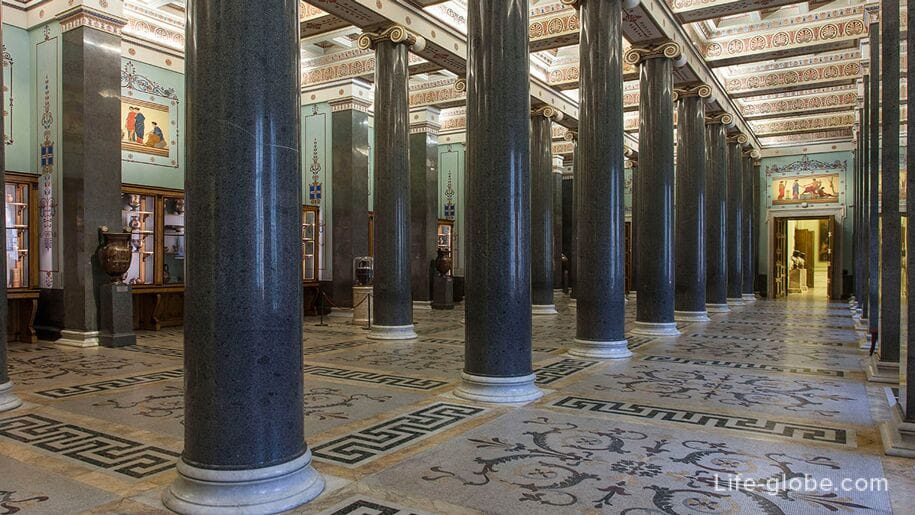
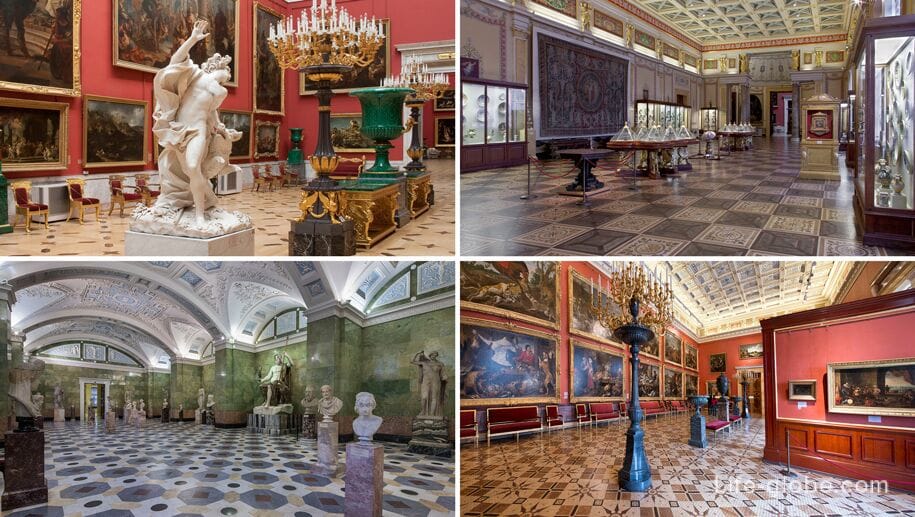
- The Grand (old) Hermitage is a building facing the Palace Embankment and connected to the building of the New Hermitage.
The building was built in 1771-1787 by the architect Yu. M. Felten, commissioned by the Empress Catherine II as a continuation of the palace buildings, to house the palace collections and the library. Since the building was built on the banks of the Neva River next to the Small Hermitage, and surpassed the latter in size, it became known as the Great Hermitage.
In 1792, Giacomo Quarenghi added a building to the Grand Hermitage, which housed Raphael's Loggias-a close repetition of the famous gallery of the Papal Palace in the Vatican.
Located in the Old Hermitage, the exhibition presents the art of Renaissance Italy.
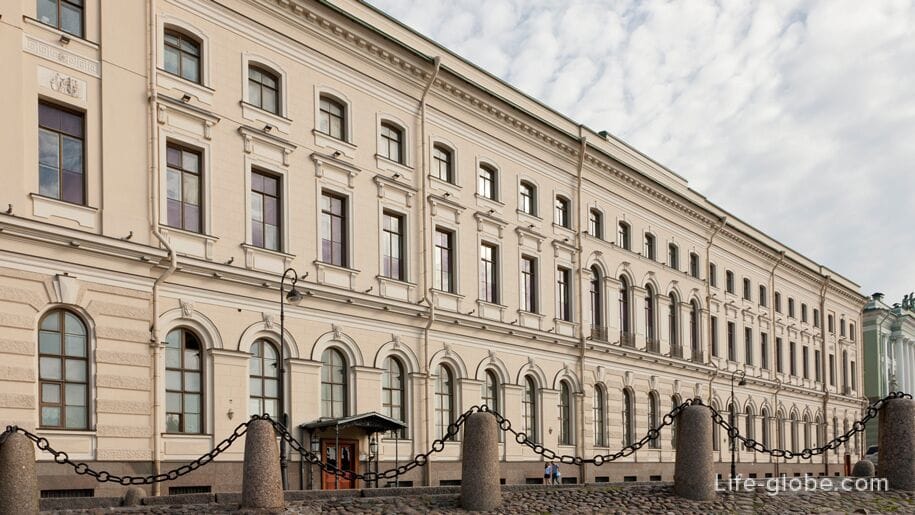
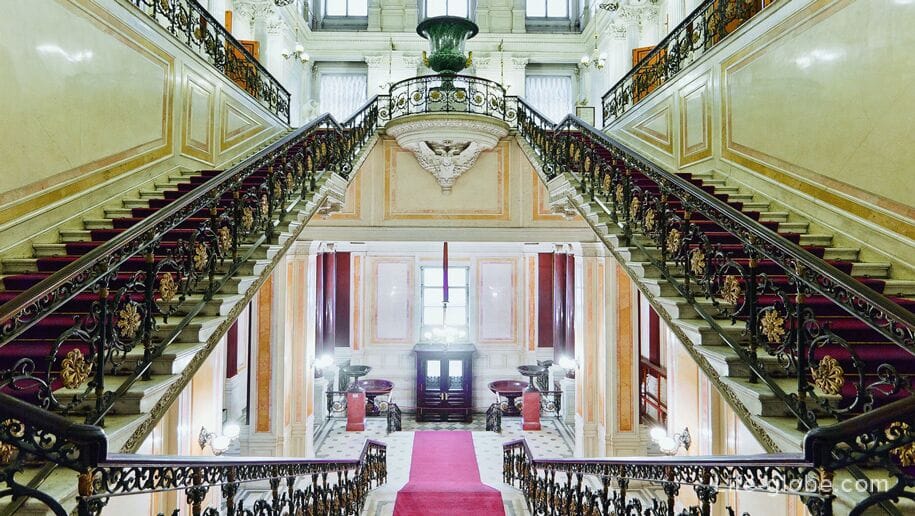
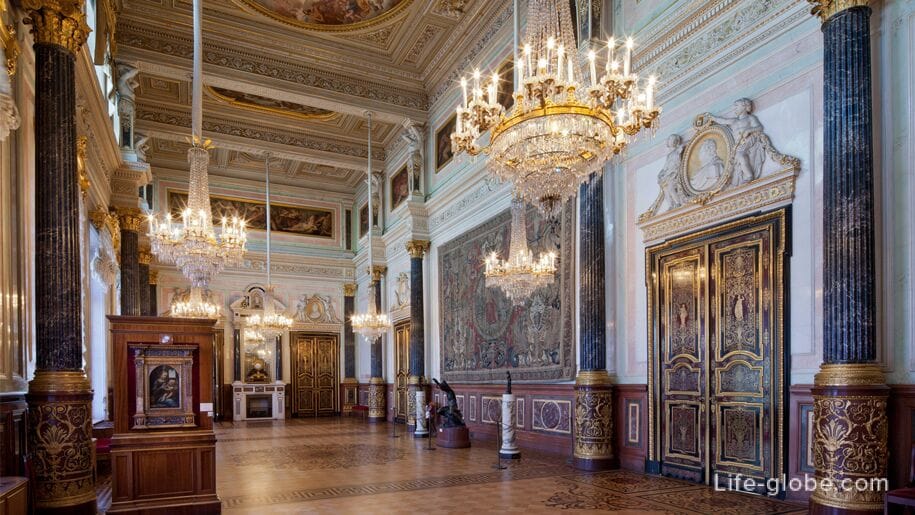
There are two routes through the listed buildings (the Main Museum Complex):
-The 1st route, when visiting which the Main Halls of the Winter Palace, as well as the expositions of the Old and New Hermitage Museums are primarily accessible. This route should be chosen if you want to focus on visiting the Western European fine art and the Hermitage Art Gallery, as well as get acquainted with the ancient collections of the museum.;
- Route 2, where the Winter Palace halls are primarily accessible: the palace interiors and living quarters of the imperial family, permanent exhibitions of Russian culture and Eastern countries, as well as English and French art and numismatics. In the second part of this route, visitors will get acquainted with part of the main halls of the Winter Palace (from the Coat of Arms Hall) and with the Art Gallery and Ancient Art.
You must purchase separate tickets for each of the routes.
In addition to perepilennogo, in the Winter Palace is also locatedJewelry Gallery, which consists of two permanent exhibitions:
- The diamond storeroom, which presents masterpieces of jewelry art from ancient times to the beginning of the 20th century, including works by Jeremiah Pozier, who worked for three empresses; products of the famous Faberge company; jewelry from the collections of members of the Romanov family; monuments of church art and diplomatic gifts to the Russian Court.
After a tour of the storeroom, visitors can independently get acquainted with the expositions of the art of the Ancient world and Ancient Egypt, as well as visit the halls included in the route No. 1 of the Main Museum Complex;
- Gold storeroom, which presents: the collection of gold of the Scythian kings, the products of the masters of Ancient Greece, jewelry from the countries of the East, the Siberian collection of Peter the Great.
After the tour, you can explore the gems of the Hermitage's archaeological collection on the first floor of the Winter Palace and visit the halls that are part of Route 2 of the Main Museum Complex.
Visiting each of the storerooms is carried out only as part of excursion groups of no more than 5 people per session and on separate tickets.
The Main Museum Complex of the Hermitage also includes two (three) other buildings:
- The Hermitage Theater and the Winter Palace of Peter the Great, which today are a single building located along the Palace Embankment and the Winter CanalEmbankment .
The Winter Palace of Peter the Great was built in 1712 as the personal residence of Emperor Peter the Great.
At the end of the 18th century, the Hermitage Theater was built on the site of the palace, and only a small part (rooms) have survived from the former palace, which are now included in the Hermitage Theater.
The Hermitage Theater is one of the oldest in St. Petersburg and in Russia. Today it is one of the most popular stage venues in St. Petersburg. The theater gives performances and concerts, and exhibitions are organized in its lobby.
In the preserved part of the Winter Palace of Peter the Great there is a memorial exhibition dedicated to Peter the Great and his era, including some rooms of the emperor - the study, dining room and turning room-have been preserved and recreated. In the former Main Courtyard of the palace, the carnival sleigh and the garden carriage of Peter the Great are displayed - a rare example of a walking carriage of the early 18th century.
Separate tickets are available for the rooms of the former Winter Palace of Peter the Great. The visit is only possible with a guided tour service.
Address of the Hermitage Theater: Palace Embankment, 32-34. Read more about the Hermitage Theater (the Winter Palace of Peter the Great)…
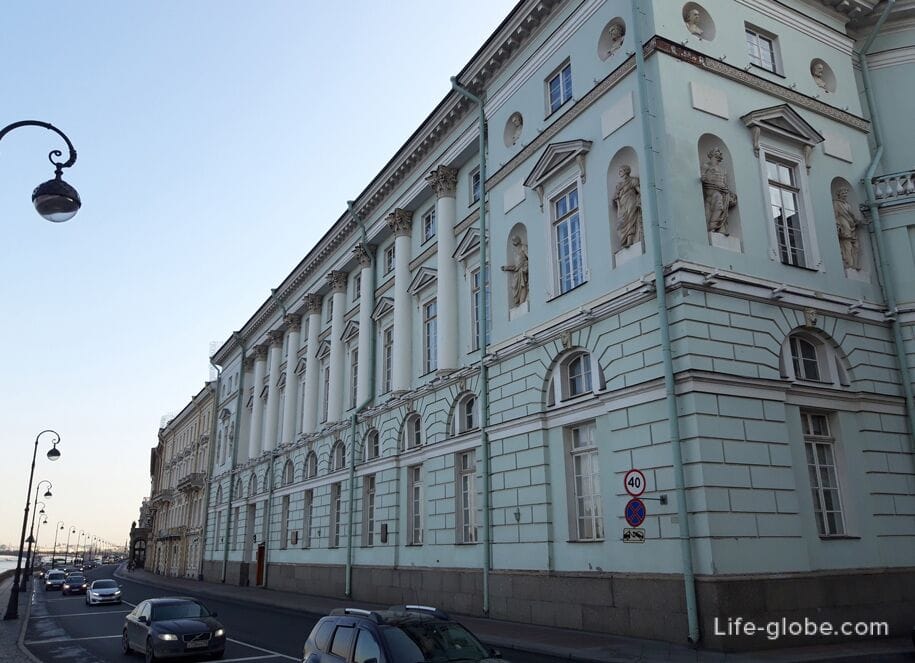
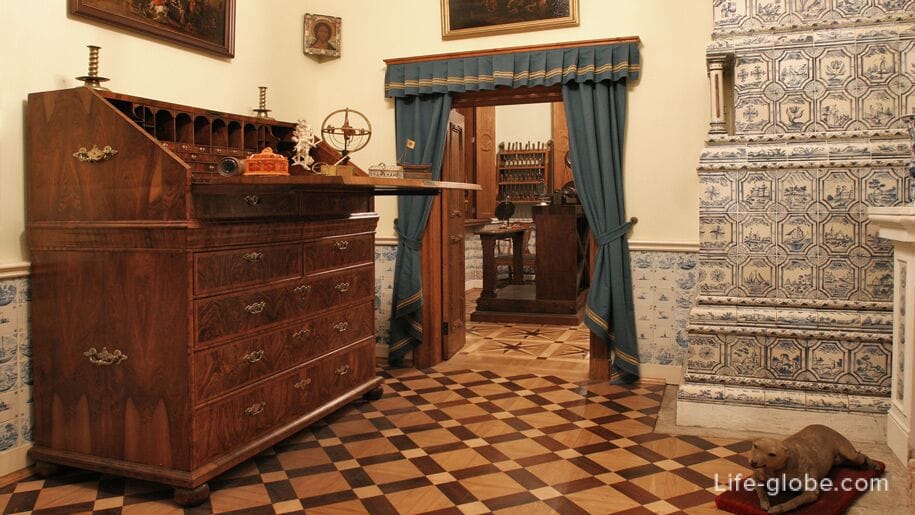
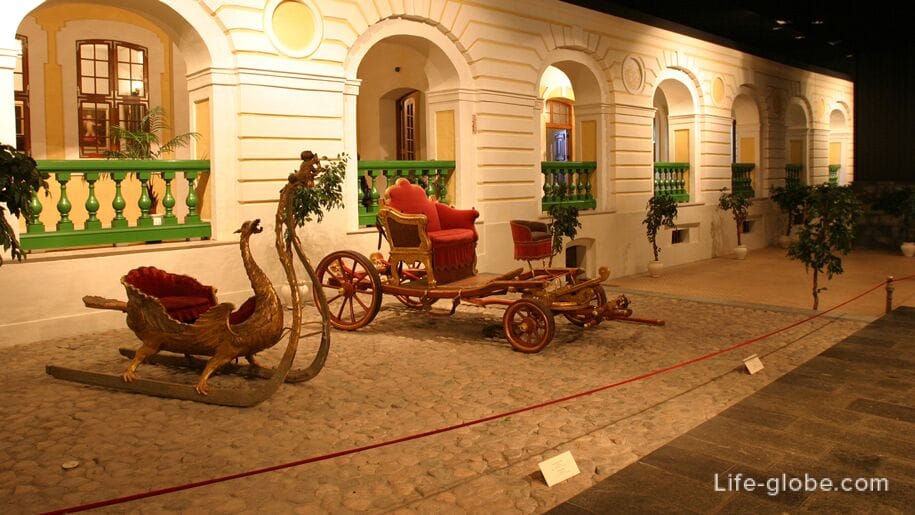
- A spare house-a mansion, as well as a palace, which acquired its present appearance at the end of the 19th century, when it was built by the architect Nikolai Becker for Grand Duke Alexei Alexandrovich on the site of older buildings.
Subsequently, the house was used for various purposes. Many employees of the Hermitage lived directly at the museum. The apartments were located in the back rooms of the Hermitage Theater and in this Spare House.
Since 2012, the mansion has been included in the register of cultural heritage sites. Currently, it is under the jurisdiction of the State Hermitage Museum: it houses museum restoration workshops.
Address of the house: Dvortsovaya Embankment, 30 / Millionnaya Street, 31.
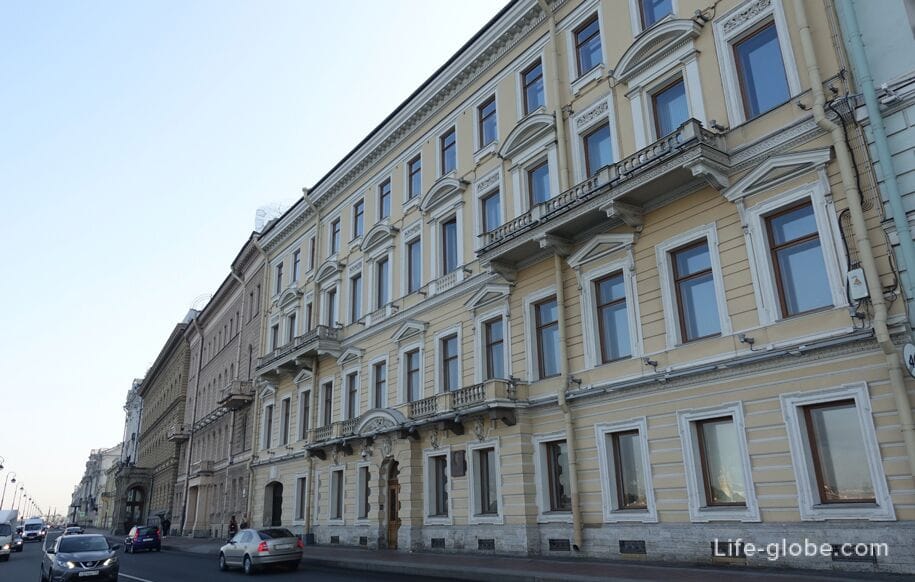
General Staff Building
The General Staff Building is a historic and majestic building located on Palace Square - opposite the Winter Palace.
The building was erected from 1819 to 1829.
Today, the General Staff building is an architectural complex that stretches along the entire eastern side of the Palace Square and consists of two wings connected by a triumphal arch.
The eastern wing of the General Staff building belongs to the State Hermitage Museum and houses the Hermitage's art collections - paintings from the 19th and 20th centuries, mainly Impressionist and post-Impressionist, as well as sculptures, halls in memory of Karl Faberge, the Guard Museum and the exhibition "Ministry of Foreign Affairs of Russia".
Temporary exhibitions are also regularly held in the halls of the General Staff, which is the main museum platform for displaying contemporary art.
Separate tickets are valid for the halls of the General Staff. Entrance from the Palace Square. Learn more about the building and the arches of the General Staff…
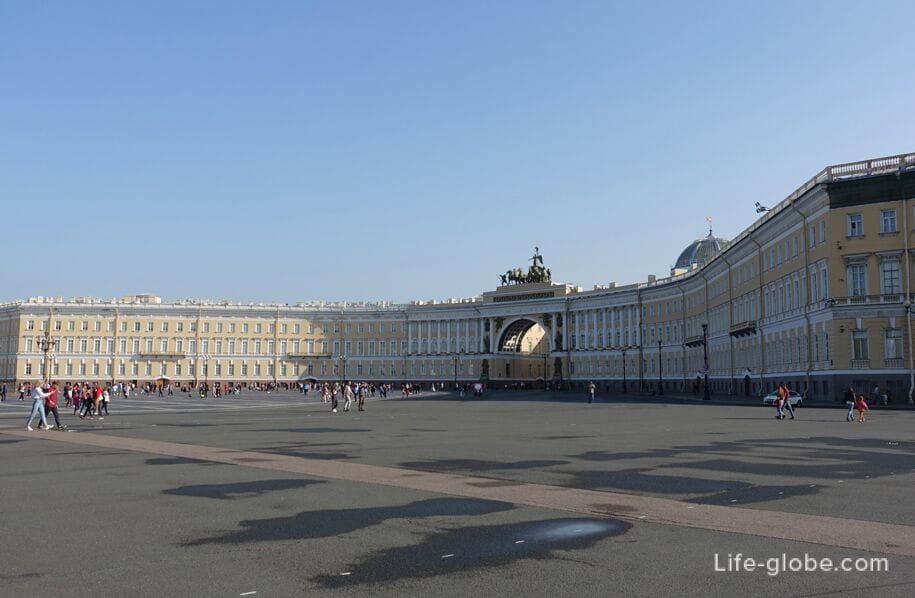
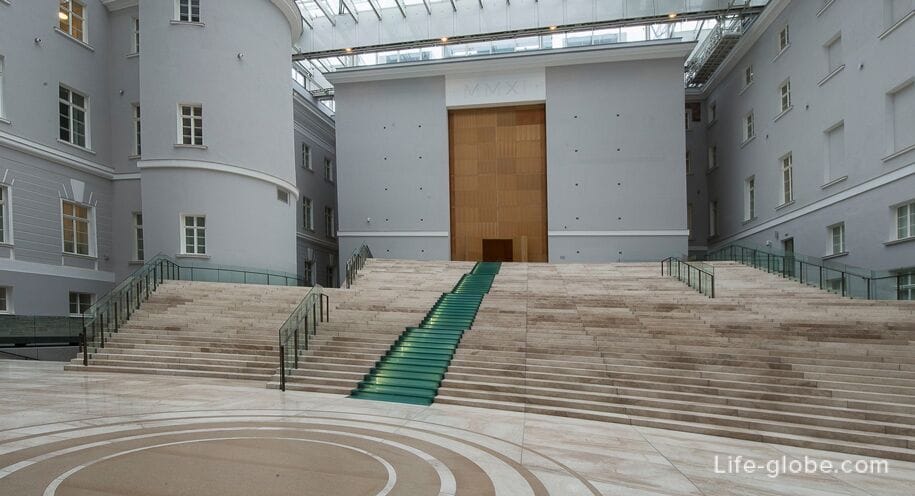
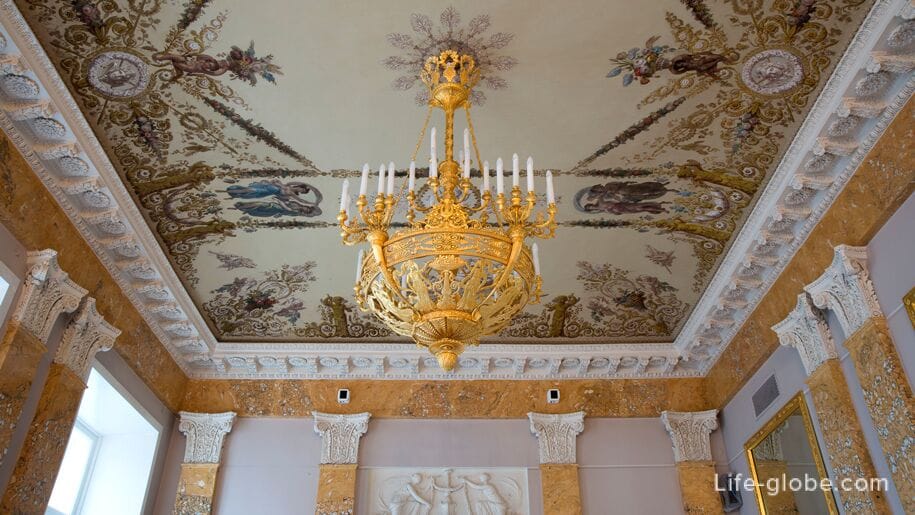
Panoramic photo of the Main Museum Complex and the General Staff of the Hermitage
From left to right on the banks of the Neva River: the Hermitage Theater is slightly visible - the Grand Hermitage - the Small Hermitage-the Winter Palace.
The New Hermitage is located behind the Big One.
Behind the Winter Palace is the Palace Square with Alexander Column in the center, behind which is the building of the General Staff.
To the right of the Winter Palace is the public garden of the Winter Palace.
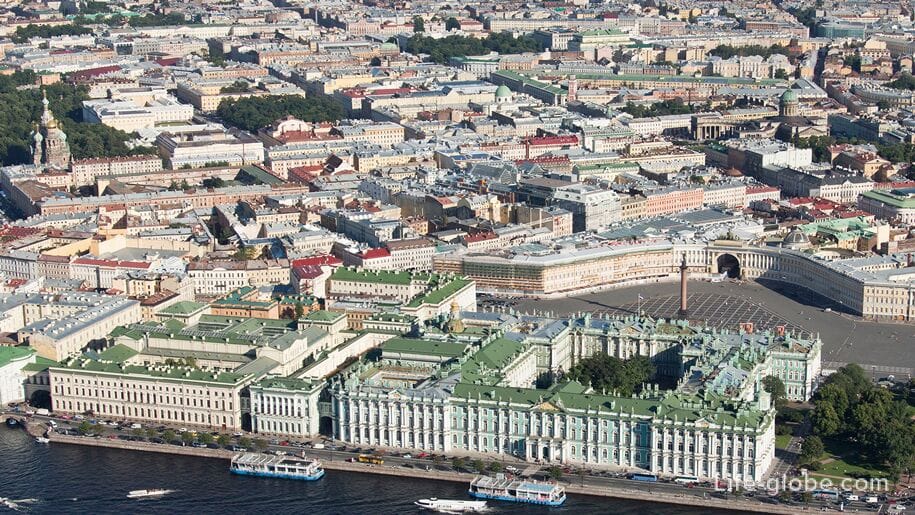
Menshikov Palace
The Menshikov Palace or Menshikov Palace was built in 1710-1727 for the approximate of Peter I - the first governor of St. Petersburg Alexander Danilovich Menshikov.
It was the first stone building in St. Petersburg.
A. D. Menshikov himself collected in this palace collections of paintings, sculptures, objects of applied art, books and works of numismatics.
Today, the palace building is a vivid example of the so-called Peter's Baroque.
The decoration and decoration of the rooms of the former palace used marble, monumental and decorative paintings and stucco, sculptures, carved and set wood, painted Dutch cobalt tiles and Russian stove tiles, painted and embossed leather, expensive fabrics and tapestries.
The exhibition "Russian Culture of the first third of the XVIII century" is located in the halls of the Menshikov Palace, and works of fine and decorative art from the collections of the State Hermitage Museum recreate the interior decoration of the Petrine period in the palace.
Separate tickets are available for the Menshikov Palace Museum.
The palace is located on Vasilyevsky Island, at the address: Universitetskaya embankment, 15.
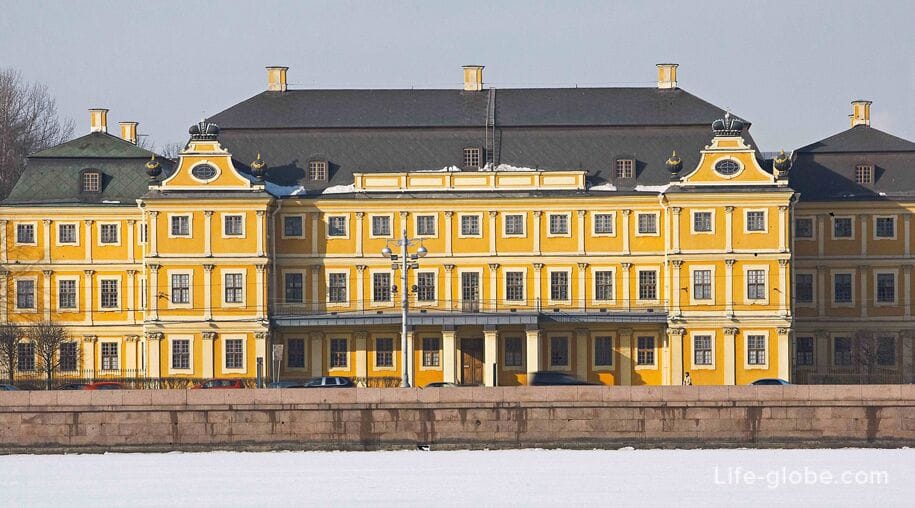
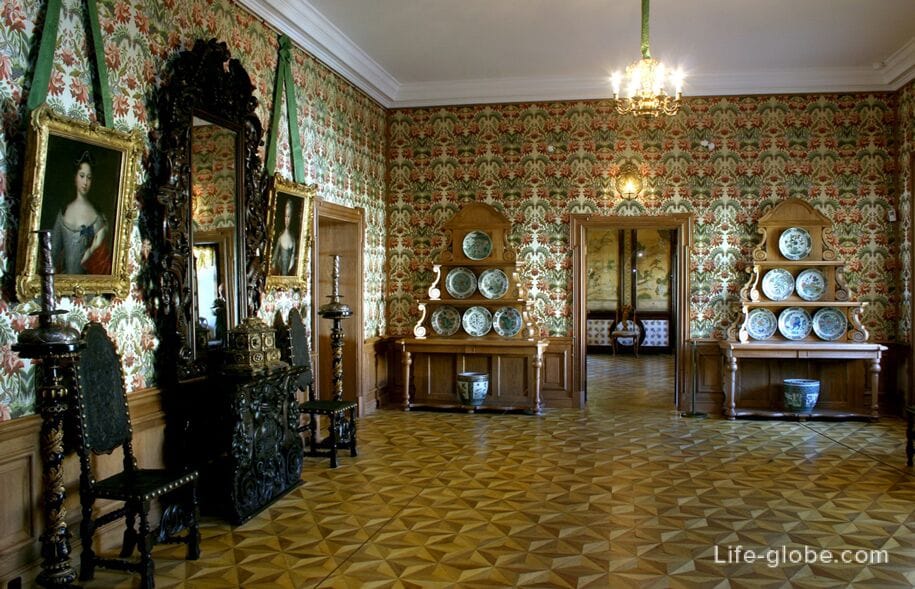
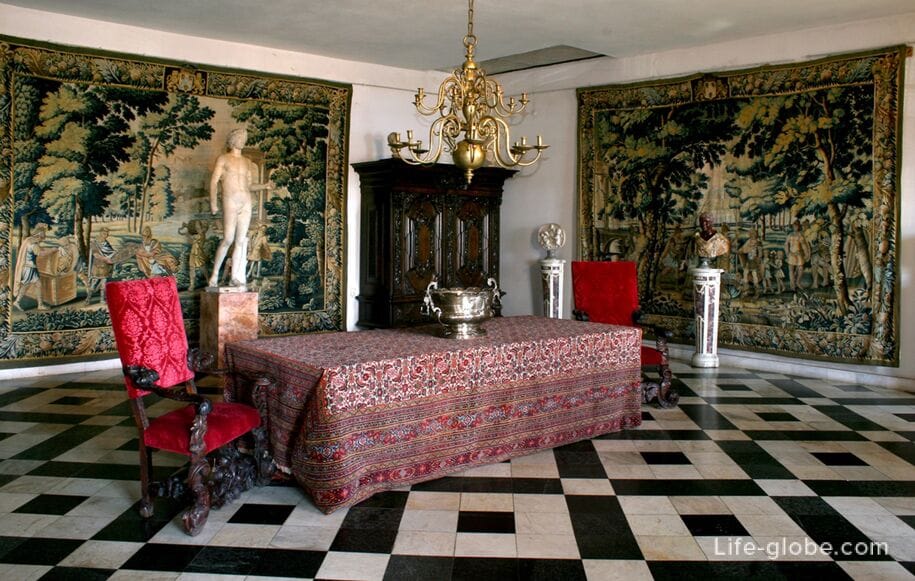
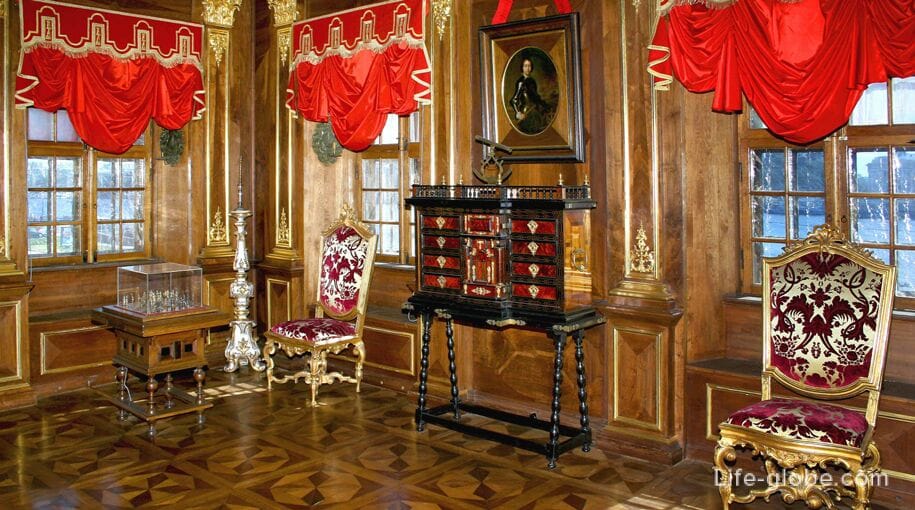
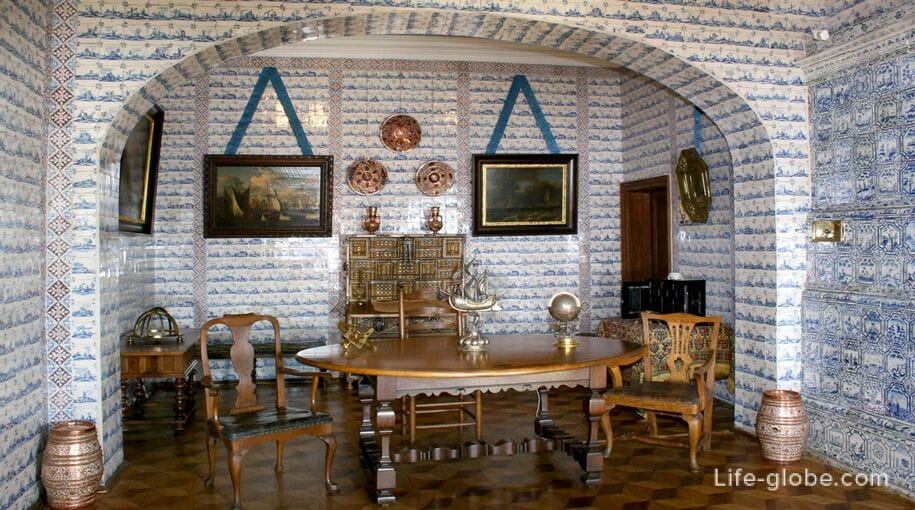
Museum in the Exchange building
The exchange building was built for the St. Petersburg Stock Exchange by architect Tom de Thomon in 1805-1810 on the site of the unfinished Exchange building that was dismantled in 1804.
Since 1939, the building has housed the Central Naval Museum. In 2014, the building was transferred to the Hermitage for the creation of a Museum of Heraldry and Awards.
Today, the Exchange building is the central structure of the architectural ensemble of the Strelka Vasilyevsky Island in St. Petersburg.
The rectangular Empire-style building, with its volume resembling an ancient Greek temple, is placed on a high granite stylobate and surrounded by a massive Doric colonnade. The pediments of the Exchange building are decorated with allegorical sculptural groups with images of the sea god Neptune and the god of trade-Mercury.
In front of the Exchange building, on an artificially filled cape, a semicircular square is organized, on the sides of which are two Rostral columns, at the base of which are sculptures of sea gods made of Pudost stone, symbolizing the Russian rivers Neva, Volkhov, Volga and Dnieper.
The Exchange building is located on Vasilievsky Island, at the address: Birzhevaya Square, 4 (near the Menshikov Palace).
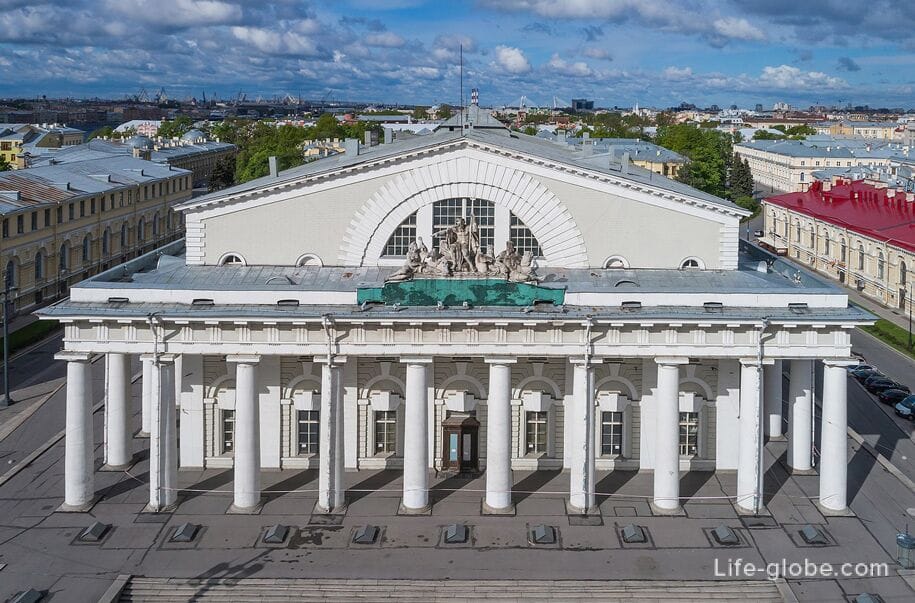
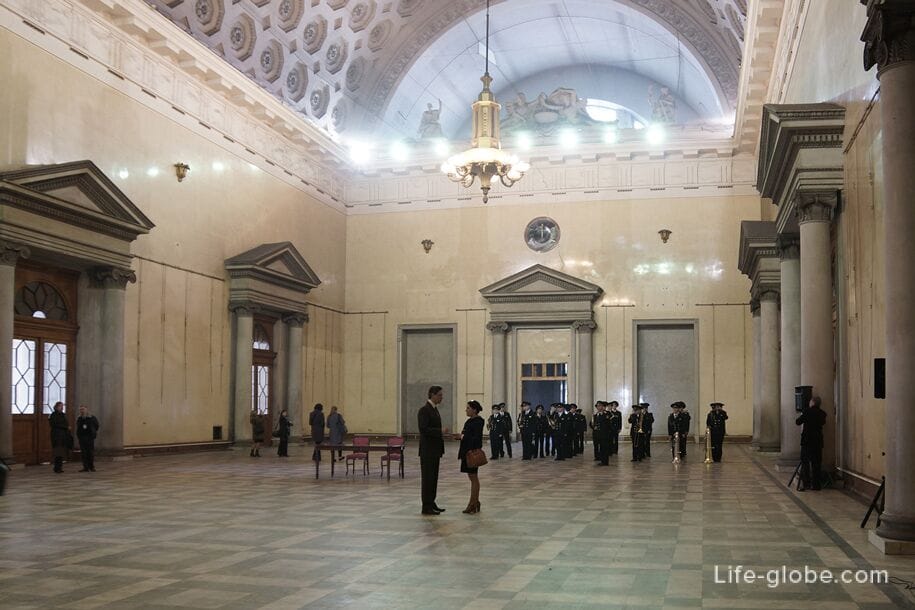
View of the Exchange building and Rostral Columns from the Palace Embankment (from Palace Bridge)
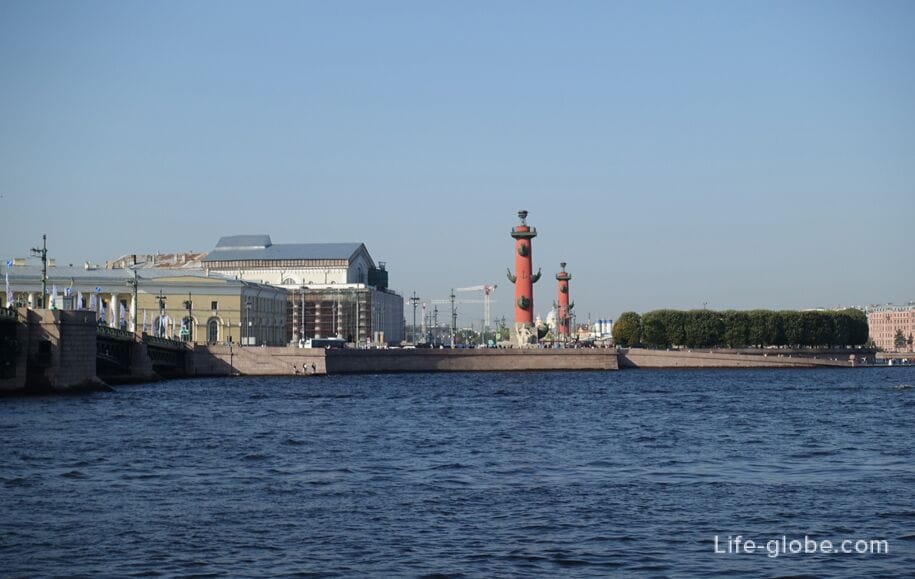
Restoration and Conservation Center "Staraya Derevnya»
The State Hermitage Museum Restoration and Preservation Center "Staraya Derevnya" (RCC Staraya Derevnya) - the State Hermitage Museum's storage facility - a complex of buildings that includes the storage facility, exhibition and lecture, restoration, engineering and administrative buildings of the Hermitage.
The uniqueness of this complex lies in the possibility of an excursion visit to the Storage Facility.
The tour route allows you to get acquainted with the works of painting and sculpture from the museum's collections: an extensive collection of furniture, clothing from the late 17th to the 21st century, a collection of carriages (carriages and harnesses) and other exhibits that were not available to the general public for a long time.
Of particular note are the two coronation carriages ordered under Catherine the Great and which participated in almost all the coronation ceremonies of their time.
Visiting the Restoration and Preservation Center is only possible as part of guided tour groups for sessions. The duration of the tour is 1 hour and 30 minutes.
Separate tickets are available for the storage museum.
The RCC is located in the Old Village historical district of the Primorsky district of St. Petersburg, at the address: Zausadebnaya Street, 37A.
Nearest metrostation: M5 "Staraya Derevnya" (400 meters). The main entrance is oriented towards Zausadebnaya Street (under a glass canopy).
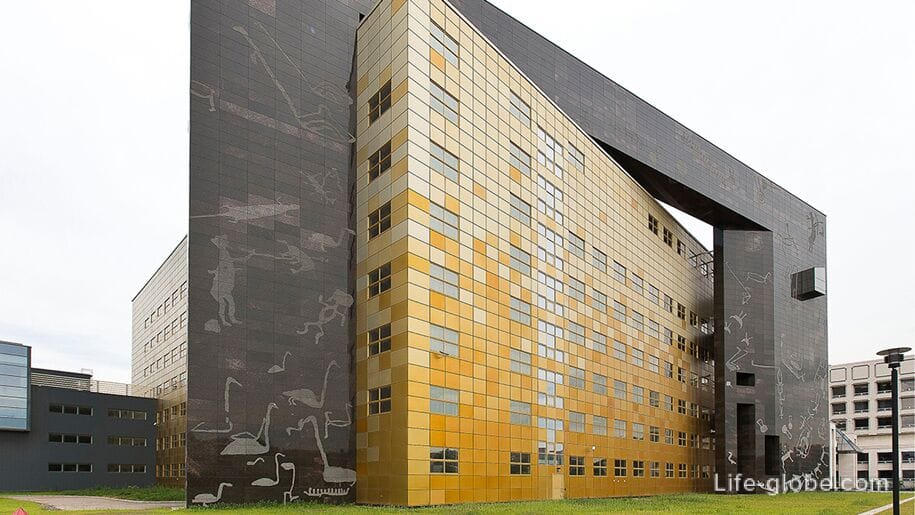
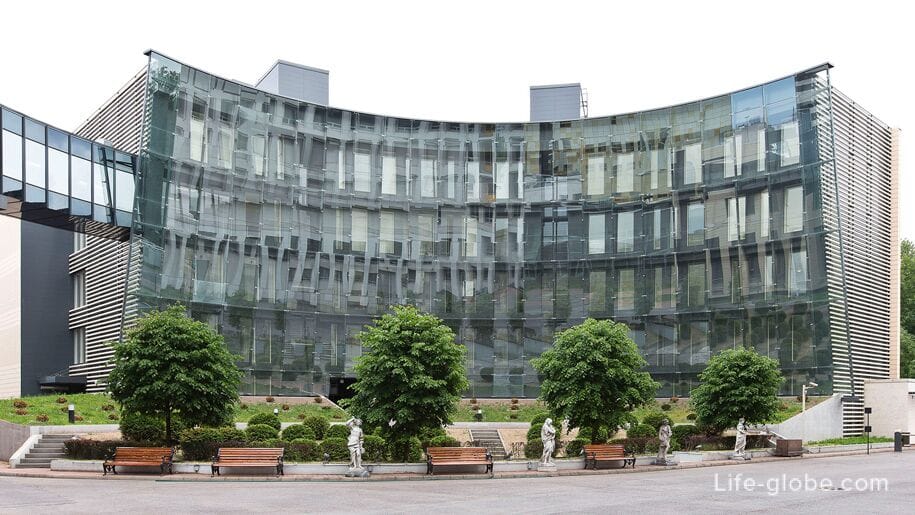
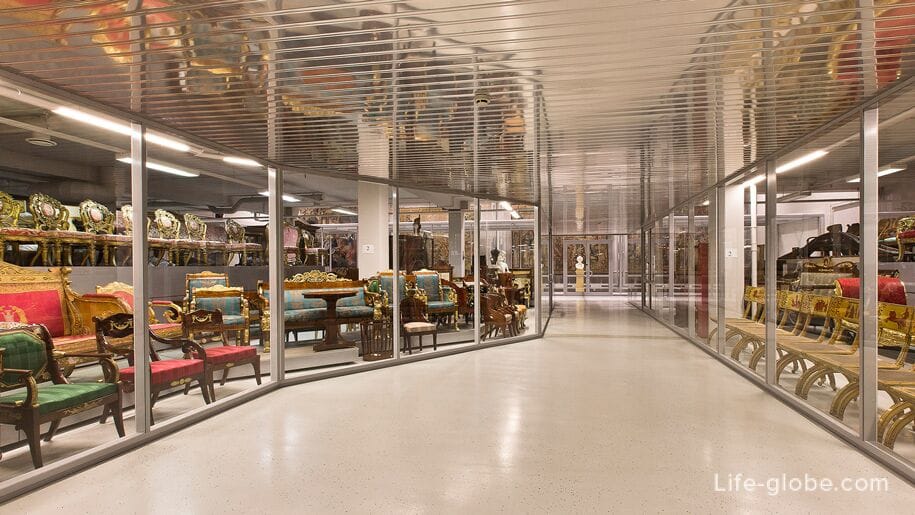
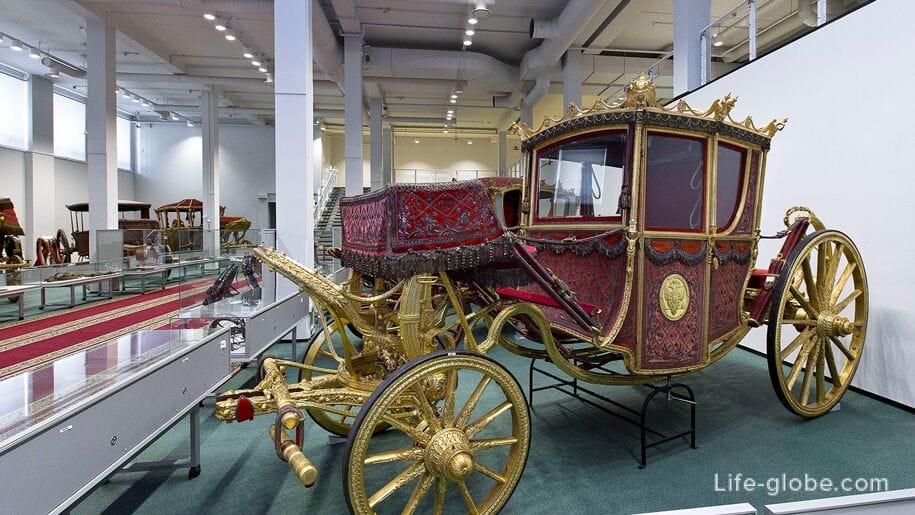
Imperial Porcelain Factory Museum
The Imperial Porcelain Factory (originally the Nevsky Porcelin Manufactory) is one of the oldest in Europe, the first and one of the largest enterprises in Russia for the production of artistic porcelain products. The factory was founded in 1744.
During the history of the Imperial Porcelain Factory, unique artistic objects were created for the interiors of palaces and ceremonies of the highest level, including those commissioned by the Highest Court.
Today, the plant houses the State Hermitage Museum exposition, opened in 2003 and created on the basis of the collection of the Lomonosov Porcelain Factory Museum, which includes more than 30,000 pieces of porcelain and glass, drawings, photographs and rare publications. It presents the stages of development of the first domestic porcelain enterprise and the history of Russian porcelain.
The museum also presents the products of the masters of the East-China and Japan, from where the passion for porcelain came to Europe; as well as porcelain objects made in famous manufactories of Western Europe in the 18th and 19th centuries.
A separate hall is dedicated to Soviet porcelain: the products of masters of the 20th century are presented, including agitation porcelain made in the first years of Soviet power, and the famous service "Cobalt Net" (1944), which became a symbol of Leningrad/St. Petersburg, the city where the porcelain factory founded in the 18th century continues to operate.
The duration of the visit to the museum is 1 hour. Separate tickets are available for admission to the museum.
The address of the museum: Obukhovskaya Oborona Avenue, 151.

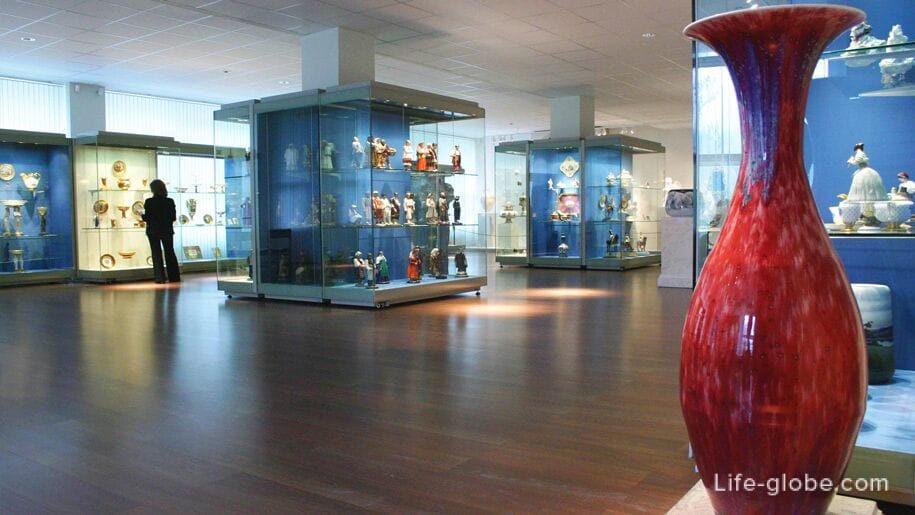
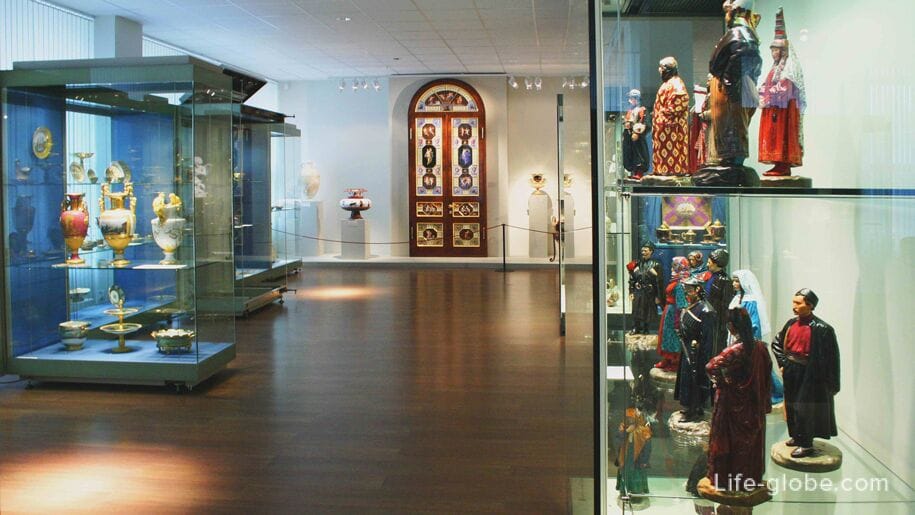
Hermitage Hotel
The Hermitage Hotel is the official hotel of the State Hermitage Museum, which is another important part of the museum ensemble.
The hotel has 5 stars and is located in a historic mansion built in the 1830s, in a quiet part of the historical center of St. Petersburg, at the address: Pravdy Street, 10.
The hotel recreates the "atmosphere of the Hermitage" in the spirit of imperial Russia with its inherent sophistication and richness. All this is facilitated by the exterior decoration of the building, as well as the interior interiors of the common areas and rooms, and even the menu of the hotel's restaurants and the uniform of the doorman.
The hotel's facilitiesinclude a boutique restaurant with traditional Italian cuisine and delicious desserts, a panoramic rooftop restaurant, a lobby bar with light snacks of traditional Russian cuisine, a fitness center, a spa and wellness center, free Wi-Fi, free parking and conference rooms.
The hotel has several categories of rooms: premium, deluxe, junior suites and suites, as well as the Imperial Suite, Presidential Suite and Hermitage Suite.
All rooms and suites are decorated with elegant furniture designed by Florentine woodworkers. Each room here will provide you with a flat-screen TV, a minibar, a safety deposit box, air conditioning and a private bathroom with Italian and Greek marble.
For your comfort, you will find bathrobes and free toiletries.
A buffet breakfast can be included in the room rate.
You can choose the room category that suits you and book it here → link to the official Hermitage hotel
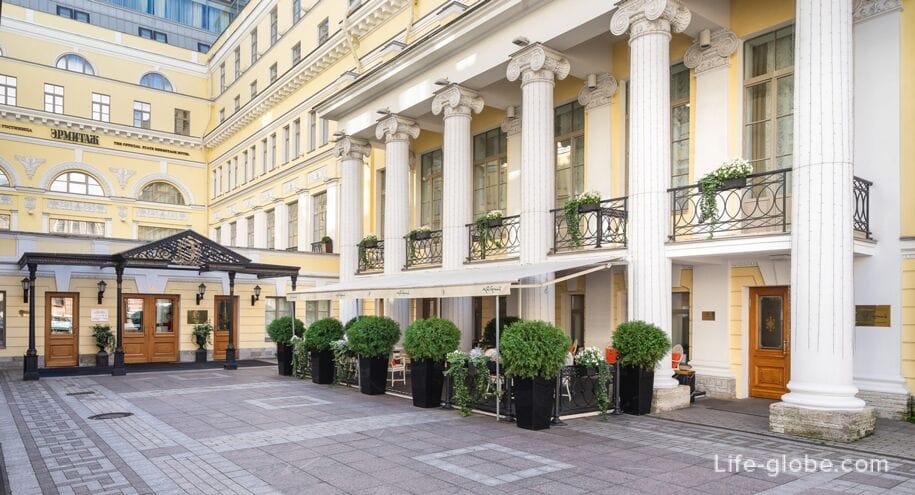
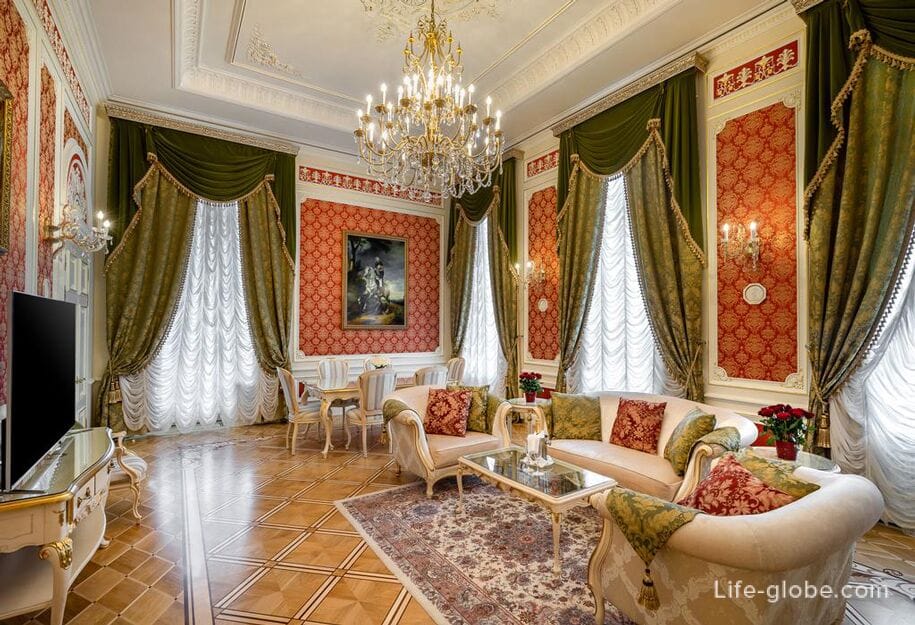
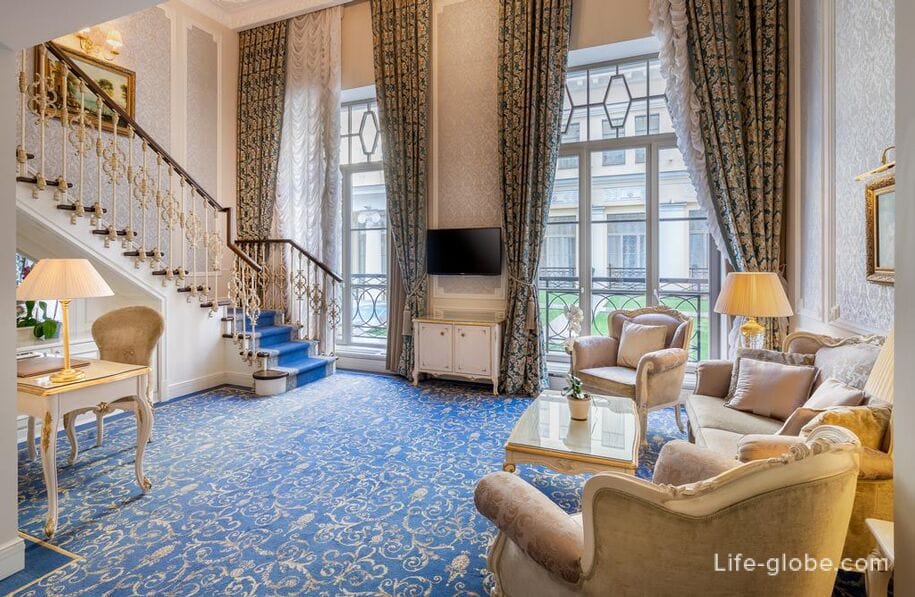
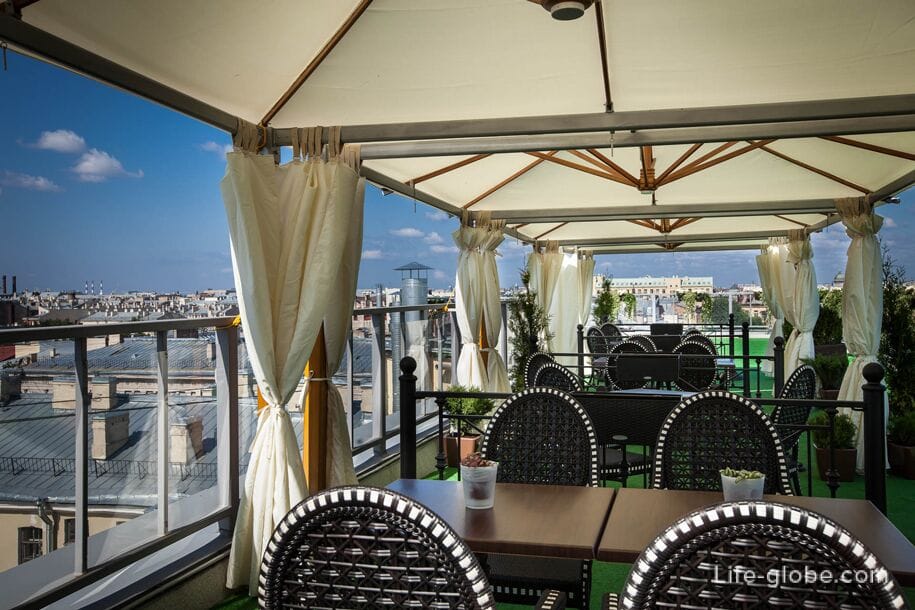
Representative offices of the Hermitage in other cities
The Hermitage has created a special form of its presence in the regions of Russia and abroad - these are permanent cultural and exhibition centers.
So there are centers in Kazan (center "Hermitage-Kazan"), Vyborg (center "Hermitage-Vyborg"), Omsk (center "Hermitage-Siberia"), Yekaterinburg (center "Hermitage-Ural"), Amsterdam (exhibition center "Hermitage-Amsterdam").
The Hermitage-Italy Scientific and Cultural Center was opened in 2007 in Ferrara, with the aim of carrying out joint scientific work on the study of collections of Italian art and Russian-Italian cultural relations. Since 2013, the Hermitage-Italy Center has been located in Venice: the premises on St. Mark's Square in the building of the Old Prosecutor's Offices were transferred to its use.
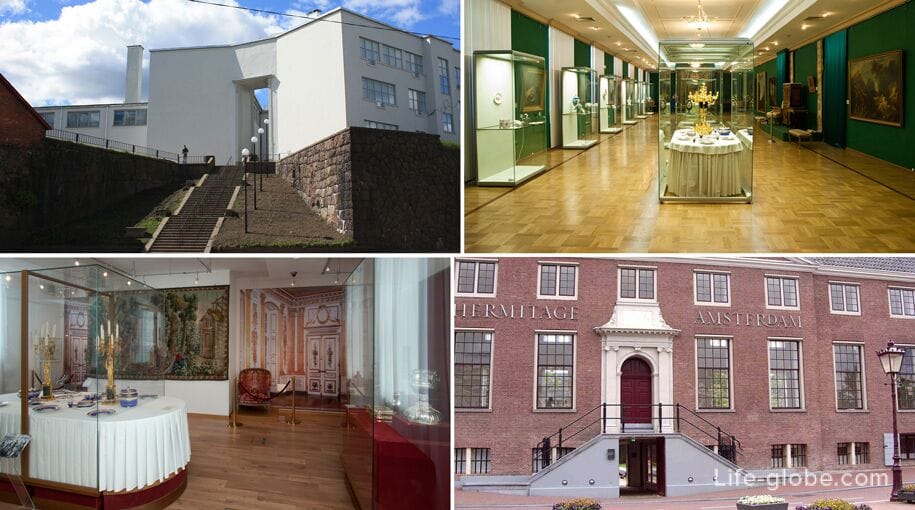
Practical information
The State Hermitage Museum is closed on Mondays.
Tickets to the buildings-at the Hermitage exposition can also be purchased online, on the official website of the State Hermitage Museum.
All the necessary information: expositions, museum buildings, departments, routes, opening hours, cost and conditions for purchasing tickets-we recommend that you check on the official website of the State Hermitage Museum before visiting.
Website of the State HermitageMuseum: hermitagemuseum.
You can also visit the Hermitage with one of the excursions
All accommodation facilities in St. Petersburg, including in the city center and more remote from it, can be viewed and booked here




